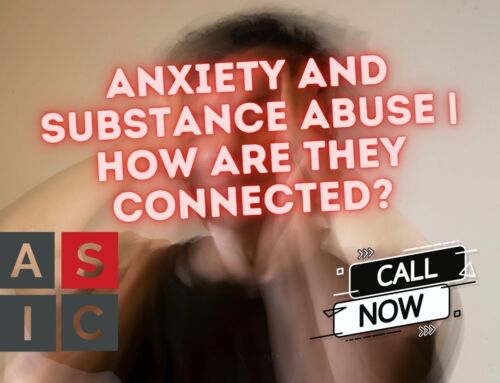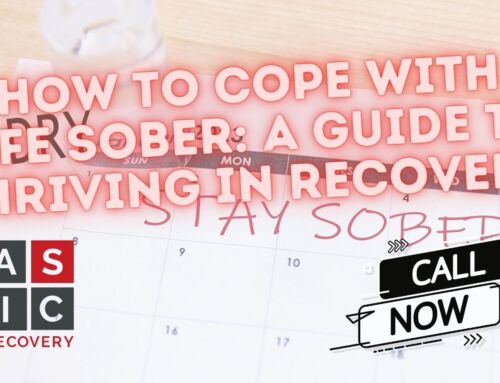Kratom, known as Mitragyna speciosa, is a tropical evergreen tree native to Southeast Asia and is mostly found in Thailand, Indonesia, and Malaysia.
The leaves of this tree have been used for centuries in traditional medicine — they have both stimulant and sedative properties, depending on the dose.
When consumed in low doses, kratom can boost energy levels and alleviate symptoms of depression and anxiety. However, when taken in high doses, it can act as a sedative, inducing euphoric effects similar to opioids.
Over the past 20 years, kratom has become increasingly popular in the US and is sold legally in most states.
Kratom addiction is becoming more and more common as many people who once were addicted to harder opioids turn to kratom as a “safer” alternative, only to become addicted to kratom instead.
Here’s everything you need to know about kratom.
Kratom’s Legal Status
As of right now, kratom is legal in most states except:
- Wisconsin
- Arkansas
- Indiana
- Alabama
- Rhode Island
- Vermont
It’s also illegal in a few cities and counties, including:
- San Diego, California
- Denver, Colorado
- Sarasota County, Florida
- Jerseyville, Illinois
- Union County, Mississippi
Finally, it’s restricted to people over a certain age in a couple of places:
- Illinois — over the age of 18
- Tennessee — over the age of 21
Kratom has not been classified as a scheduled drug by the DEA, which means that it’s not illegal on a federal level. However, they have listed it as a “Chemical of Concern,” which just means they’re monitoring to see if they believe it’s dangerous enough to schedule.
Despite its odd legal status, the FDA has decided not to regulate kratom at all, which means that any kratom you buy could have quality or purity problems — and much of it does.
The FDA has been hesitant to regulate kratom mostly because there’s little comprehensive research on its long-term effects on the human body. Kratom has been marketed as a “natural” and “safe” alternative to traditional opioids, which has further complicated its regulation.
Is Kratom an Opioid?
While kratom is not an opioid, it does interact with opioid receptors in the brain in a way that’s similar to how opioids interact with them. This interaction produces a similar sense of euphoria and pain relief as opioids.
This is why some people believe that kratom is dangerous — opioids are highly addictive drugs that are fueling a massive drug crisis around the world.
However, kratom does not cause respiratory depression, a dangerous side effect associated with opioid overdose. This has led some to argue that kratom is a safer alternative to opioids, but this perspective often overlooks the potential for addiction and other health risks.
Can You Get Addicted to Kratom?
Yes, you can get addicted to kratom.
Regular use of kratom can lead to physical dependence and addiction. When you use kratom in high doses for long periods of time, you may experience withdrawal symptoms if you try to stop using it — these symptoms are very similar to opioid withdrawal symptoms.
Just like any other drug, your body will also develop a tolerance to kratom. Over time, you’ll need larger and larger doses to achieve the same effect.
Is Kratom Safe?
Kratom’s safety mostly depends on the dosage and frequency of use. If you’re using kratom for a few days or weeks at a low dose, or if you use it irregularly, you might not have any side effects at all.
However, if you’re using kratom in large doses regularly, you can develop serious health complications. Liver damage is common in chronic users, and some users have reported developing seizure disorders after long-term use.
The damage that kratom causes to your liver is what’s most concerning, and this can be accelerated if you also drink or use other drugs on top of kratom.
Cases of kratom-induced liver damage have been reported, with symptoms including jaundice, itching, and abdominal pain. If you are using kratom regularly and start to notice these symptoms, get medical help immediately.
Can You Overdose on Kratom?
While rare, it is possible to overdose on kratom — however, kratom overdose is usually a result of combining kratom with other substances, such as alcohol or prescription drugs.
Overdose symptoms can include severe nausea, hallucinations, psychosis, seizures, and loss of consciousness. If you suspect someone has overdosed on kratom, call 911 right away and administer first aid if possible.
What Are the Long-term Effects of Kratom Use?
Chronic use of kratom can have a variety of negative long-term effects, both physically and psychologically.
Physical effects can include weight loss, insomnia, and constipation in addition to liver damage. Psychological effects can include anxiety, depression, and even hallucinations as a result of psychosis. If you already suffer from mental health issues, kratom can make those worse.
Because chronic kratom use can also lead to addiction and dependence, and because kratom interacts with the same receptors in your brain that opioids bind to, you can experience withdrawal symptoms if you try to quit.
It’s not uncommon these days for people to seek treatment solely for kratom addiction.
Symptoms of Kratom Addiction
Common signs of kratom addiction include:
- Constant strong cravings to use kratom
- Cravings that you can’t overcome even when kratom has caused problems in your life
- Unsuccessful attempts to quit
- Neglecting daily activities to use kratom, including work, school, or childcare
- Withdrawing from family and friends
- Experiencing withdrawal symptoms when not using kratom
- Irritability
- Weight loss
- Constipation
- Decreased appetite
- Decreased libido
- Money problems
- Hygiene issues
If you or someone you know is displaying these symptoms, you need to seek professional help immediately.
Kratom Withdrawal Symptoms
Withdrawal from kratom can be extremely uncomfortable. Symptoms can include:
- Muscle aches
- Insomnia
- Irritability
- Hostility and aggression
- Emotional outbursts
- Runny nose
- Jerky movements
The severity and duration of withdrawal symptoms can vary based on your overall health, the amount of kratom used, and the length of use.
If you experience withdrawal symptoms when you run out of kratom, going to a rehab or detox center might be the best way to get sober. Sober living is another option if you can’t go to a 24/7 treatment facility.
If You’re Struggling with Kratom Addiction, Don’t Be Afraid to Ask for Help
If you or someone you know is struggling with kratom addiction, it’s important to seek professional help. Treatment options like intensive outpatient programs (IOP) and counseling can give you the tools and support you need to overcome addiction.
With professional help and support, it’s possible to get sober and reclaim your life.
IOP at ASIC Recovery
Are you looking for substance abuse treatment in Texas?
At ASIC Recovery, our Intensive Outpatient Program (IOP) is dedicated to helping individuals develop healthier coping skills and build a recovery-supportive network in all aspects.
Click to learn more.



